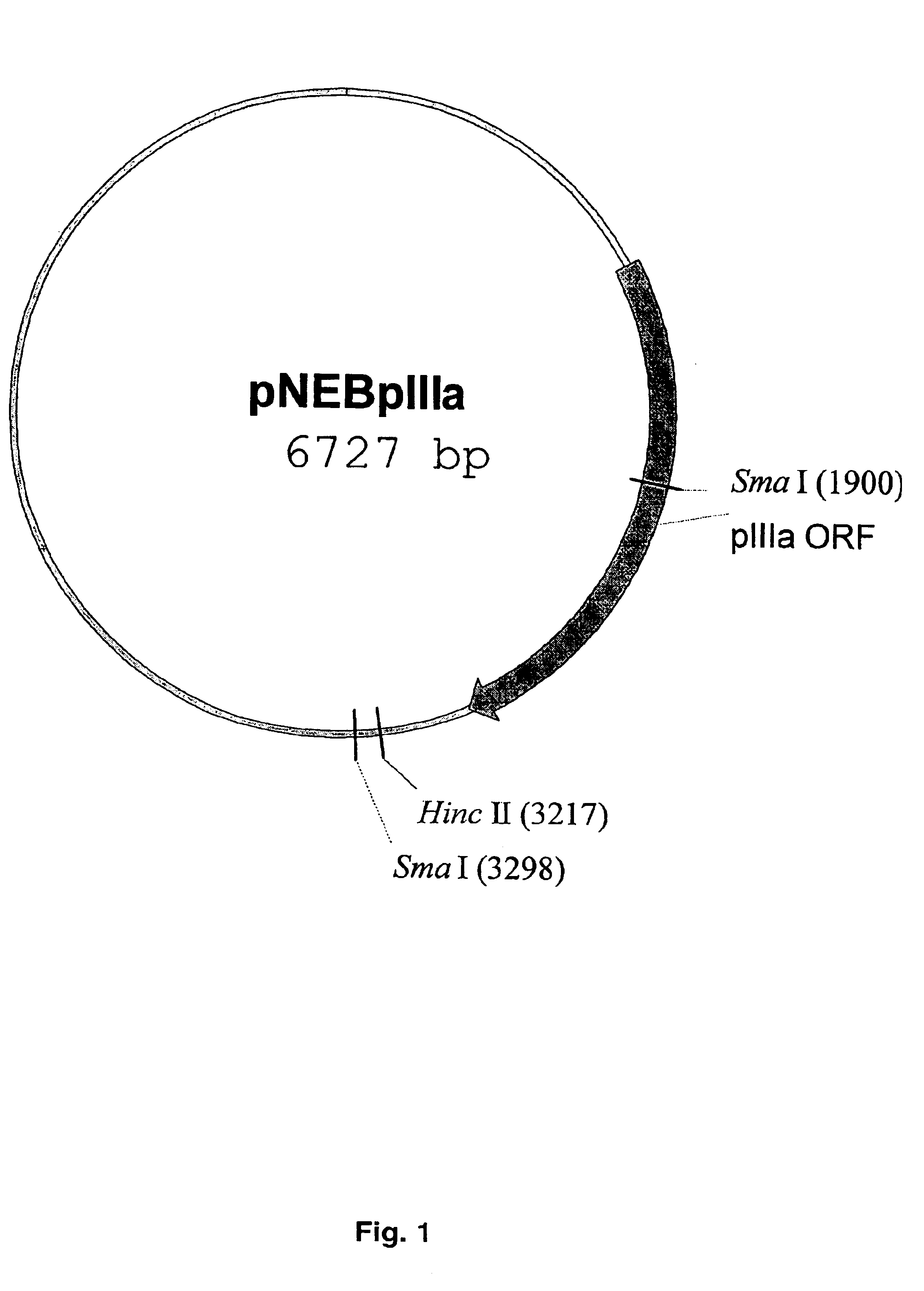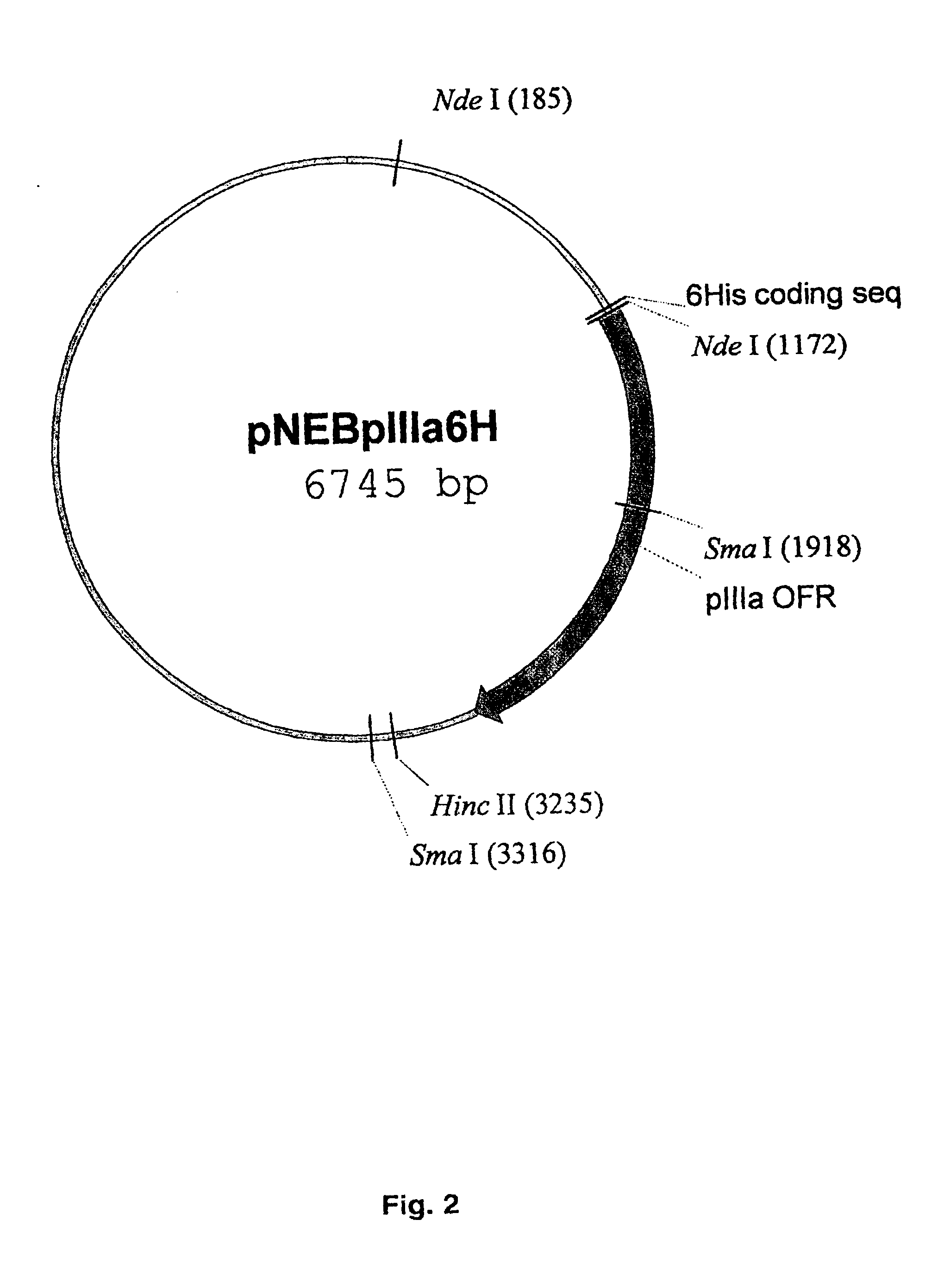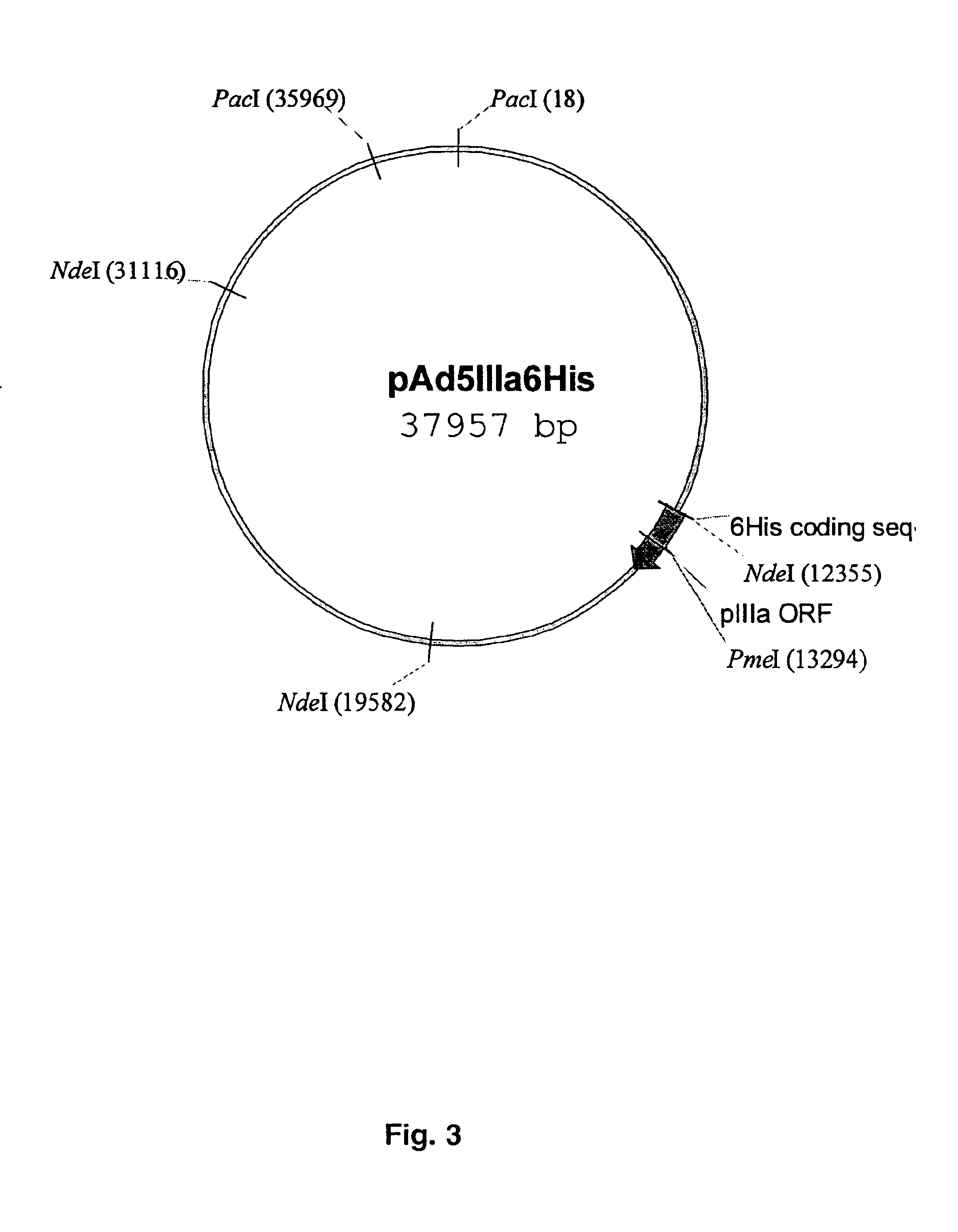Capsid-modified recombinant adenovirus and methods of use
a technology of recombinant adenovirus and capsid, which is applied in the field of modification of adenoviral gene therapy vectors, can solve the problems of low yield, low level of wild-type pix, and inability to fully benefit from adenoviral vectors. full effect, the effect of reducing the number of wild-type pix
- Summary
- Abstract
- Description
- Claims
- Application Information
AI Technical Summary
Benefits of technology
Problems solved by technology
Method used
Image
Examples
example 1
Genetic Modification of Adenovirus Capsid Protein IIIa
[0063]Being adenovirus capsid proteins, pIIIa and pIX may be used as a carrier of heterologous peptide sequences, which may serve as purification tags or targeting ligands and, therefore, be utilized for virus purification or / and targeting. For the initial proof of concept, a six-His tag was incorporated into the amino-terminus of pIIIa, and a small 8-amino acid peptide tag—Flag (Asp Tyr Lys Asp Asp Asp Asp Lys, SEQ ID No. 1) was incorporated into the carboxy-terminus of pIX. The possibility to purify the modified viruses by binding to relevant affinity medium was demonstrated.
Construction of Recombinant Plasmids
[0064]In order to generate the shuttle vector for the modification of pIIIa gene, PmII-fragment DNA (4055 bp) from plasmid pTG36021 containing complete Ad5 genome was cloned between SmaI and HincII sites in the plasmid pNEB193. Correct orientation of PmII-fragment containing pIIIa gene in the context of pNEB193 was confir...
example 2
Genetic Modification of Adenoviral Capsid Protein IX
[0070]In order to generate the shuttle vector for incorporation of Flag peptide (Asp Tyr Lys Asp Asp Asp Asp Lys, SEQ ID No. 1) into the C-terminus of the IX protein, AdEasy vector system was utilized (He et al., 1998). Oligonucleotides FLAGc.U: 5′-CTG CCG ATT ATA AGG ATG ACG ATG ACA AGT (SEQ ID No. 7) and FLAGc.L: 5′-ACT TGT CAT CGT CAT CCT TAT AAT CGG CAG (SEQ ID No. 8) were designed to form DNA duplex coding for Flag peptide. DNA duplex was cloned into DraI site located at 3′-end of pIX coding sequence. Cloning of the Flag oligo was done by ligation of BsrGI-DraI and DraI-BstXI fragments of DNA isolated from pShuttle plasmid (FIG. 5) with oligo duplex and subsequent cloning of the resultant DNA fragment between BsrGI and BstXI sites in pShuttle plasmid. After transformation of E. coli with ligation mix, plasmid clones were analyzed for the presence of Flag-oligo insert by PCR using upper primer designed for the position of 3904 ...
example 3
Construction of EGEP-Labeled Capsid Protein pIX
[0074]The present example demonstrates the fusion of enhanced green fluorescent protein (EGFP) to the C-terminal of capsid protein pIX.
[0075]All adenoviral constructs were generated by a shuttle vector / homologous recombination in Escherichia coli (He et al., 1998). Control virus Ad-CMV-EGFP expressed enhanced green fluorescent protein (EGFP, BD Biosciences, Clontech, Palo Alto, Calif.) in E1 and contained native IX. To construct Ad-IX-EGFP, the EGFP HincII-SacI fragment from pABS.4-CMV-tetR-EGFP was blunted with large Klenow fragment (New England Biolabs, Beverly, Mass.) and inserted in frame into pShuttle-NheI-FLAG (Dmitriev et al., 2002) which was linearized with NheI and blunted. A correct clone based on restriction digestion and expression of pIX-EGFP was linearized with PmeI and homologously recombined with pAdEasy-1 in electrocompetent BJ5183 to generate an adenoviral backbone containing IX-EGFP in place of wild-type IX. Both Ad-C...
PUM
| Property | Measurement | Unit |
|---|---|---|
| molecular weight | aaaaa | aaaaa |
| pH | aaaaa | aaaaa |
| pH | aaaaa | aaaaa |
Abstract
Description
Claims
Application Information
 Login to View More
Login to View More - R&D
- Intellectual Property
- Life Sciences
- Materials
- Tech Scout
- Unparalleled Data Quality
- Higher Quality Content
- 60% Fewer Hallucinations
Browse by: Latest US Patents, China's latest patents, Technical Efficacy Thesaurus, Application Domain, Technology Topic, Popular Technical Reports.
© 2025 PatSnap. All rights reserved.Legal|Privacy policy|Modern Slavery Act Transparency Statement|Sitemap|About US| Contact US: help@patsnap.com



